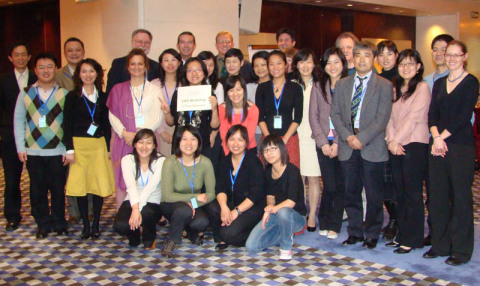
Two weekends ago CIEE (the Council for International Educational Exchange, a program that I teach for involving American students studying abroad in China) organized an excellent workshop here in Shanghai. Three presenters, Mick, Loren, and Meg, flew in from abroad to run the workshop, along with our very own Justin O’Jack, head of CIEE in Shanghai. Everyone did an outstanding job of presenting ideas, resources, and methods for improving the teaching-learning nexus, as well as facilitating the intercultural nexus.
Last week I incorporated some of the styles we worked on into my
classes for both CIEE and NYU in Shanghai, and found that they worked
quite well. Even after several years of teaching, I sometimes forget
that it is not about stuffing as much information into their heads as
I can in a two-hour period, but also about cultivating their own
intellectual skills. To that effect, a close analysis of a document
or image can be more productive than a 20-slide powerpoint
presentation.
For example, during a discussion of the May Fourth Movement (a famous
Chinese nationalist movement that erupted in 1919 and lasted into the
1920s) I told the students about Lu Xun, one of the most famous
Chinese writers from that era. We discussed his decision to turn from
medicine to writing as a way of curing China's spiritual ills.
According to his own autobiographical account, it was his viewing of
an image of a Chinese spy being executed by a Japanese soldier in 1904
that led him on his path to being a great Chinese writer.
In class we spent quite a long time discussing this image. I was inspired by
the workshop presenters' use of the D.I.E. method to ask them to evaluate the image on an
emotional as well as observational level. We then discussed how Lu
Xun interpreted the image and why it was such a life-changer for him.
Here's a passage from his own writings about the incident:
"At the time, I hadn't seen any of my fellow Chinese in a long time,
but one day some of them showed up in a slide. One, with his hands
tied behind him, was in the middle of the picture; the others were
gathered around him. Physically, they were as strong and healthy as
anyone could ask, but their expressions revealed all too clearly that
spiritually they were calloused and numb. According to the caption,
the Chinese whose hands were bound had been spying on the Japanese
military for the Russions. He was about to be decapitated as a 'public
example.' The other Chinese gathered around him had come to enjoy the
spectacle." (Lyell 23).
(http://mclc.osu.edu/rc/bios/lxbio.htm)
Viewing such an image leads to broader questions about national and
ethnic identity politics. For example, in my class on modern Chinese
history for the NYU program I asked Chinese students in the class how
they felt about the image, and we discussed whether Chinese Americans
might feel differently about it than non-Chinese Americans. I also
asked them how they would feel if the caption read that it was a
Chinese and not a Japanese officer who was executing the spy. This
led into a very spirited discussion about how our feelings,
observations, and perceptions are shaped by our national and ethnic
identities as well as those of others. I need not add how cogent this sort of understanding is in today’s world, and perhaps that above all is why were are here teaching American students in and about China.